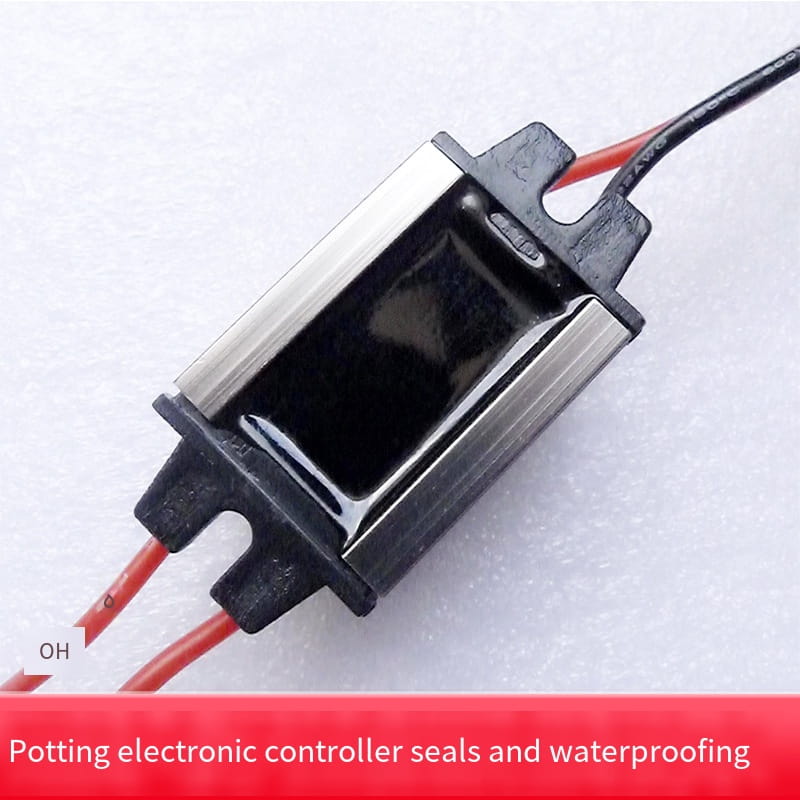Introduction to the advantages, disadvantages, and application scope of organic silicon potting compound
 Sep 05,2023
Sep 05,2023

 Hanast
Hanast
With the rapid development of the electronic industry, people pay more attention to the stability and user experience of electronic products, and have stricter requirements for safety and reliability. Sealing adhesive plays a crucial role in the rapid upgrading of electronic products, such as bonding, waterproof potting compound thermal conductivity, shock absorption, sealing, insulation, and so on.
Introduction to silicone potting compound:
Organic silicon potting adhesive is a composite material prepared based on organic silicon material. The most common silicone sealant consists of two components (A and B), including addition and condensation types.
The addition molding potting adhesive can be cured using platinum catalyzed vinyl crosslinking reaction, and can be deeply potted. During the curing process, there are no low molecular weight substances produced, the shrinkage rate is extremely low, and the adhesion to the component or potting cavity wall is good.
The condensation type potting adhesive undergoes a condensation reaction between 107 adhesive and water vapor in the air, and cures by removing small molecules such as acids, alcohols, and oximes. The shrinkage rate is high, and the adhesion to cavity components is low.
Single component potting adhesive also includes two types: condensation type and addition type. The condensation type is generally only suitable for shallow layer (maximum curing thickness 10mm) encapsulation, while the addition molding generally requires low-temperature storage (refrigerator), and after encapsulation, it needs to be heated and cured.
Advantages, disadvantages, and application range of organic silicon sealing adhesive
Advantages: strong anti-aging capability, good weather resistance, waterproof performance, excellent impact resistance, seismic resistance, electrical performance and insulation capability. Has excellent resistance to cold and hot changes, can be used within the temperature range of -60 ℃ to 200 ℃ and maintain elasticity without cracking; No corrosion to electronic components; With excellent repair ability, it can easily and quickly remove sealed components for repair and replacement.
Disadvantage: Poor adhesion.
Scope of application: Suitable for sealing various high-end precision/sensitive electronic devices that work in harsh environments. Such as LEDs, display screens, photovoltaic materials, diodes, semiconductor devices, relays, sensors, automotive stabilizers HIV, on-board computer ECUs, etc., mainly play a role in insulation, moisture prevention, dust prevention, and shock absorption.




 Home
Home



 Causes and effects of settlement of potting compound
Causes and effects of settlement of potting compound  You May Also Like
You May Also Like







 Tel
Tel
 Email
Email
 Address
Address












